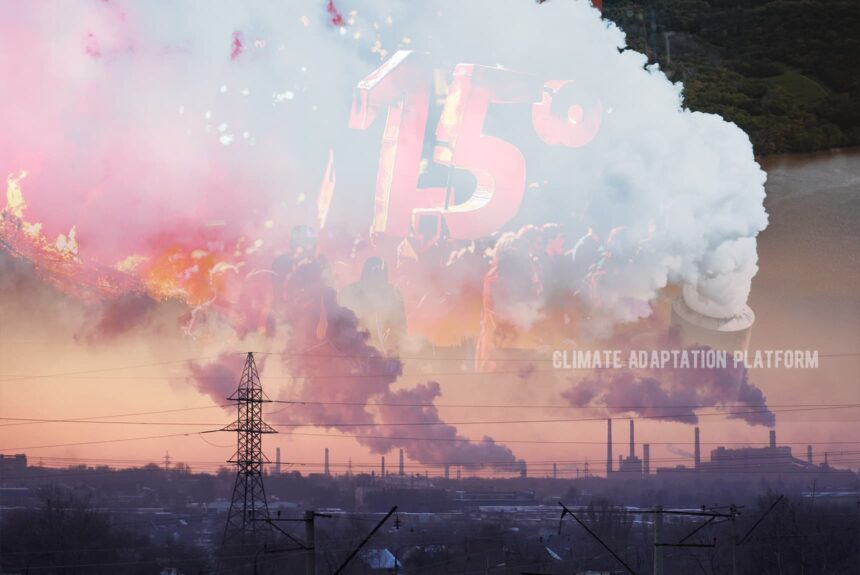The UNEP’s Emission Gap Report 2022 reveals that we will exceed the 1.5°C climate target century but head towards a 2.8°C warming by 2100.
Even if countries implement their pledges written in their Nationally Determined Contributions (NDCs), it will only bring the temperature down to between 2.4°C to 2.6°C.
According to the IPCC, exceeding the temperature rise of 1.5°C will drive the earth to the brink of multiple disastrous tipping points. The IPCC has identified several climate tipping points or critical thresholds in a system that, if exceeded, can lead to irreversible consequences.
The Economist article, “The world is going to miss the totemic 1.5°C climate target,” discusses how politicians and negotiators agreed to a temperature limit during the previous COPs. In 1992, the temperature limit big emitters wanted was 2°C as they believed this temperature rise would not constitute “dangerous anthropogenic interference with the climate system” (The world is, 2022).
Besides, that target was much better than doing nothing or following the business-as-usual path leading to a 3.5°C warming. But tough negotiations from the 1.5°C brigade moved the needle from just a simple 2°C to “well below 2°C” and aim for 1.5°C.
During the COP26, leaders who gathered have tried to keep the 1.5°C alive, but at the year’s COP27, it might as well be better for leaders and negotiators to acknowledge that the 1.5°C goal is dead and would be better for them to face the truth and explore what living world beyond 1.5°C looks like (The world is, 2022).
Scientists and those in the field know that the 1.5°C target is dead. However, activists wanted the world to believe that it is still possible to achieve this because of the carbon budget – “the amount of cumulative carbon-dioxide emissions associated with a specific amount of warming”.
According to the IPCC, the 50% chance of avoiding 1.5°C is equivalent to 2,890 billion tonnes. However, 2,390 billion tonnes have already been emitted by 2019, which leaves 500 billion tonnes before the pandemic. Since then, 40 billion tonnes have been emitted annually, leaving us with only 400 billion tonnes in the budget.
Based on our current emissions, it will only take ten years until we will exhaust the budget. But we can also prolong or delay using it up based on how fast and steeply we can reduce our emissions.
Negative emissions or pulling carbon dioxide out of the atmosphere can provide the space for more carbon emissions. For example, with a budget of 400bn tonnes, rapidly removing the 200bn tonnes from the atmosphere can give us 600bn tonnes to be emitted.
The prospect of negative emissions justified the 1.5°C in the Paris agreement and has become the basis of all “net zero” policies today.
But if the negative emissions present a plausible pathway, it also represents a dangerous lure. It can delay the start of emissions reduction and reduce the steepness required in the emissions cuts because you can deduct the negative emissions later.
Reduce the steepness of emissions cuts because you can deduct the negative emissions later on, which can work for meeting the 2°C limits but not for the 1.5°C.
Meeting the 1.5°C limits will require massive investment in the carbon-removal industry that can pull out a billion tonnes of CO2 by 2030 and in 2050 and geoengineering technology that can block the amount of sunlight reaching the earth’s surface. While all these technologies can be counter-effective in the end as it does not address the core of the problem – reducing GHG emissions.
Even modelling and some notable climate scientists have admitted that meeting the 1.5°C is very unlikely. Admission of this fact is problematic because it can have enormous political and financial implications.
It would strengthen the case of the “loss and damage” payments to climate-vulnerable countries, calls for more support on climate adaptation funding and financing, and could weaken the push for drastic climate actions like the transition away from fossil fuels.
Scientists know that the lower the temperature rise, as shown by the IPCC 2018 report, 1.6°C is better than 1.7°, and 1.7° is better than 1.8°. As the new mantra goes, “every fraction of a degree matters”.
So it goes without saying that we need to keep the temperature from rising as much as possible and slash emissions as deeply as possible.
Source:
The world is going to miss the totemic 1.5°C climate target. (2022, November 5). The world is going to miss the totemic 1.5°C climate target. The Economist. Retrieved from https://www.economist.com/interactive/briefing/2022/11/05/the-world-is-going-to-miss-the-totemic-1-5c-climate-target
Igini, M. (2022, October 19). The Tipping Points of Climate Change: How Will Our World Change. Earth.Org. Retrieved from https://earth.org/tipping-points-of-climate-change



Leave a Reply